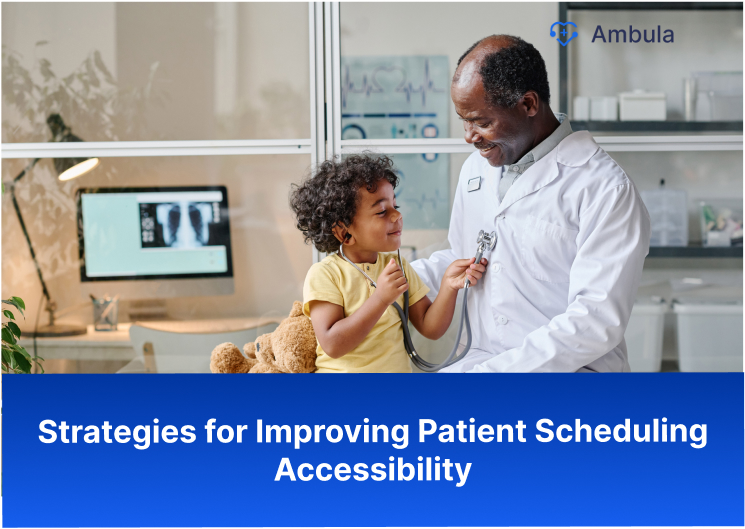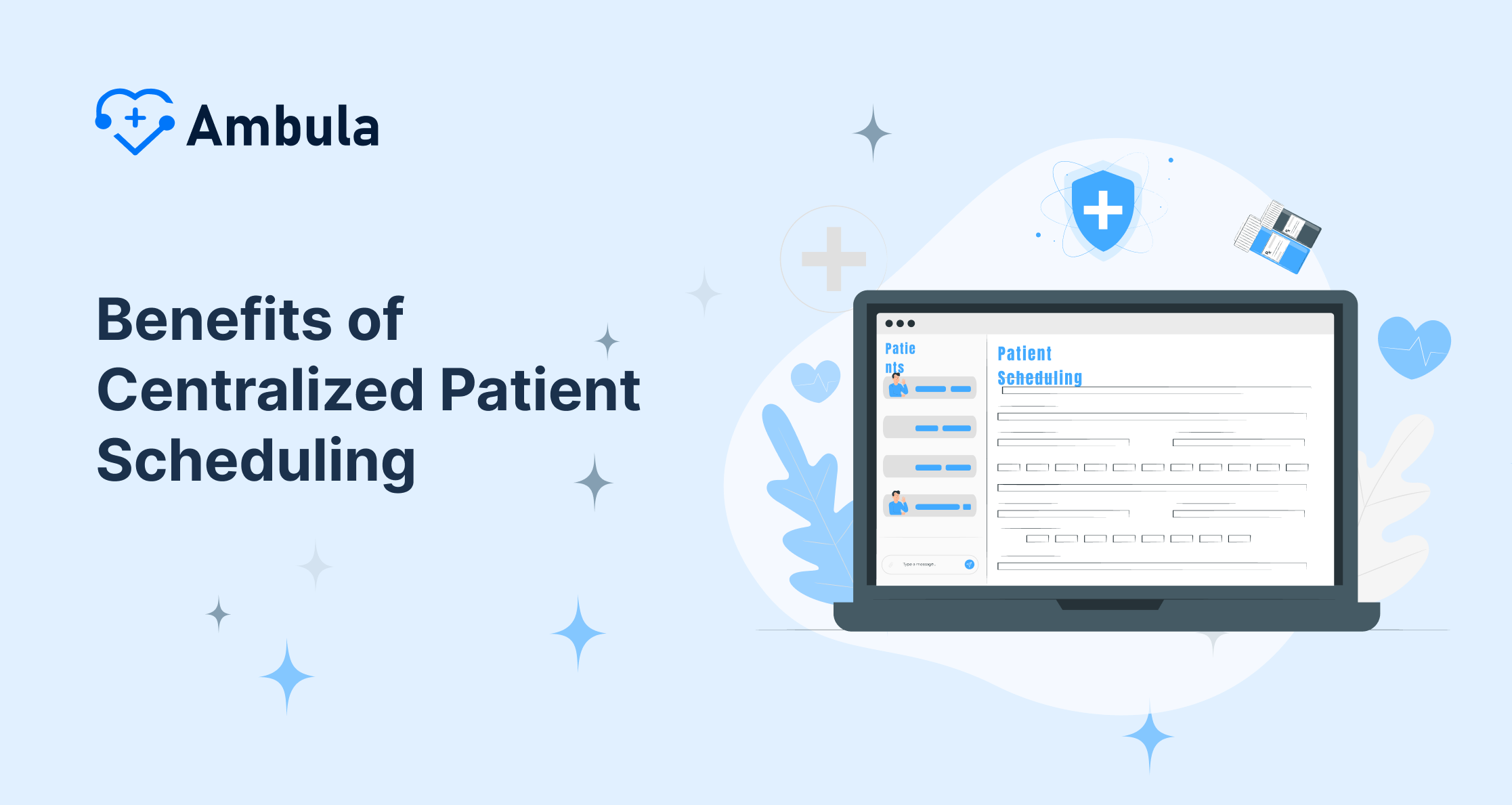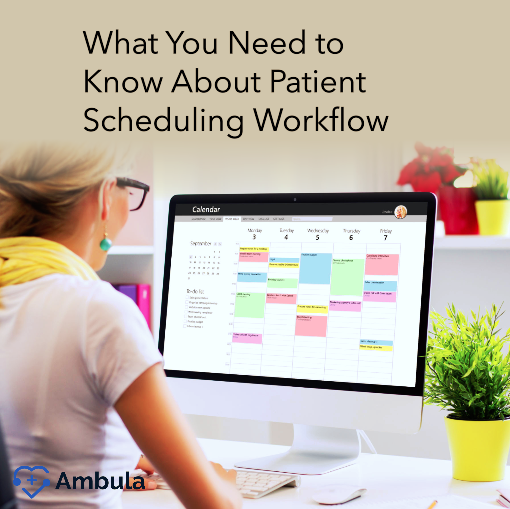
Patient scheduling is a critical component of healthcare delivery and patient satisfaction. Unfortunately, scheduling patient appointments can be complicated and time-consuming for both healthcare providers and patients. It can be difficult for patients to find a convenient appointment time, and providers often struggle to ensure that their scheduling process is accessible and efficient. Fortunately, there are several strategies that healthcare providers can use to improve the accessibility of their patient scheduling process. These strategies include implementing automated appointment scheduling, streamlining the scheduling process, and utilizing technology to enhance Communication. By using these strategies, healthcare providers can ensure that their patient scheduling process is effective and accessible. Strategies for Improving Patient Scheduling Accessibility
Implement Automated Appointment
When you implement automated appointment scheduling in your healthcare practice, the benefits are substantial. Automated systems facilitate a seamless booking experience for your staff and patients. By transitioning to an online system, you remove the friction and time constraints of traditional phone scheduling, freeing up your staff to focus on in-person patient care.
With an automated system, patients can self-schedule at their convenience, 24/7, which increases patient satisfaction. No more playing phone tag or waiting on hold — a few clicks and their appointment is booked. It also reduces the likelihood of double bookings and clerical errors, ensuring a smoother operation.
Timely reminders are another advantage of automation. These systems send out appointment confirmations and reminders through SMS or email, drastically reducing no-show rates. According to studies, reminder systems can decrease no-shows by as much as 30%. This alone can significantly impact your practice’s efficiency and revenue.
Streamline the Scheduling Process
To streamline the scheduling process in your healthcare practice, start by simplifying the steps a patient must take to secure an appointment. The fewer clicks and screens a patient navigates, the better. This complexity reduction improves the patient experience and lessens the likelihood of errors and incomplete bookings.
Ensuring your process is intuitive and straightforward is key; a complicated system will deter patients from completing their bookings. Clearly outline available appointment slots, and if a choice must be made for the type of visit (e.g., consultation, follow-up, or physical), make these options evident and easy to understand.
Compatibility is crucial, too. Your system should function seamlessly across various devices since patients will access the platform from smartphones, tablets, and desktop computers. An appointment scheduling interface that is equally responsive on any device meets patients where they are, which is essential in our mobile-first world.
Utilize Technology to Improve Communication
Utilizing technology to improve communication with your patients can transition your practice from good to great. Embrace automated systems that send timely appointment reminders via text message or email. This direct line of communication keeps appointments front-of-mind and can play a pivotal role in reducing the no-show rate, a common pitfall in practice management.
Initiating automated follow-up messages post-appointment not only fosters a continued connection but also provides an opportunity for patients to give feedback or ask follow-up questions. When you show that you’re listening and available, you build patient loyalty and trust.
Keep patients informed of changes to your schedule as soon as they happen. An agile communication system allows for immediate updates to avoid any inconvenience or confusion. Flexible, tech-savvy solutions like these ensure that all parties are on the same page, preserving the integrity of the schedule and demonstrating respect for everyone’s time.
Make Patient Scheduling Accessible
Making patient scheduling accessible for everyone is non-negotiable. You want every patient, including those with disabilities, to book an appointment easily without any barriers. This starts with ensuring your online scheduling platform integrates assistive technologies such as screen readers and can be navigated without a mouse.
Incorporate clear, simple language that everyone can understand. Complicated medical jargon can be a barrier. Instead, use straightforward terminology to guide your patients through the booking process. Additionally, you must consider patients who may not have easy access to online services. Offering alternative booking options via phone or in person remains crucial, ensuring you cater to all demographics in your practice.
Security matters just as much as accessibility. Assure your patients that their data is safe with you by using a scheduling system that adheres to healthcare privacy laws and data protection standards. A secure system protects sensitive information and reinforces patient trust in your services.
Use Online Patient Scheduling Platforms
Patients appreciate the transparency of viewing available appointment times and selecting what works best for them, contributing to a satisfying user experience. Research has shown that online scheduling can significantly enhance patient satisfaction, with some studies indicating over 80% of patients prefer the convenience of online booking.
Beyond the ease of booking, these platforms can significantly reduce administrative workload. By automating appointment confirmations, reminders, and rescheduling processes, your staff can focus more on patient care and less on administrative tasks.
It’s also a smart way to minimize no-shows. Automated reminders by these systems ensure patients remember their appointments, crucial for maintaining a smooth and efficient schedule. A well-managed schedule maximizes your practice’s time and resources, something both your team and patients will thank you for.
In leveraging online scheduling, choosing a platform that’s intuitive and integrates seamlessly with your existing technology is crucial. Compatibility with electronic medical records and billing systems simplifies the back-end processes and helps maintain continuity of care. With the right platform, you can transform the appointment scheduling experience, making it a positive touchpoint in the patient’s journey.
Allow for Flexible Scheduling Options
Flexible scheduling options can make a difference for your patients and your practice. When you allow for various appointment times, including same-day slots, you accommodate those with unpredictable schedules and urgent needs. It’s a thoughtful approach that values patient time and boosts satisfaction.
Diverse scheduling choices surpass traditional 9-to-5 boundaries, making healthcare more accessible to everyone. Consider too the fact that flexibility can directly impact health outcomes. By providing more options, you may see an increase in regular check-ups and preventive care visits—proactive steps that can catch issues early.
But flexibility isn’t just about when appointments are offered but also how they’re managed. Ensure that your system can handle rescheduling requests efficiently, allowing patients to adjust their plans without undue stress. It’s a simple way to reduce no-shows and last-minute cancellations that can disrupt your practice’s flow.
Train Staff on Scheduling Processes
It’s essential for staff to not only understand how to book or change an appointment but to grasp the underlying logic of your scheduling system. This includes managing cancellations, setting up sequential appointments effectively, and accommodating emergency bookings without causing disruption.
Interactive training methods, such as role-playing common scenarios, can be particularly effective. They help staff anticipate and navigate real-life situations they may encounter. Additionally, regular refresher courses will ensure that all team members are up to date with any software updates or policy changes.
Another vital aspect of training involves privacy and security considerations. With patient data at stake, staff must be well-versed in confidentiality protocols and understand the importance of protecting sensitive information.
Utilize Patient Surveys
Harnessing patient surveys is a smart strategy to fine-tune your scheduling process. You demonstrate commitment to continuous improvement and patient-centered care by actively seeking feedback. Craft concise surveys to gauge patient satisfaction with the ease of booking appointments, the flexibility of your scheduling options, and their overall experience with your practice.
Use survey platforms that are user-friendly and accessible to patients of all age groups and tech-savviness. Aim to convene this feedback shortly after their appointment, when the experience is fresh in their minds. Questions should be clear and direct, ideally with the option to rate their experience and provide additional comments.
Crucially, analyze the collected data to identify trends and common patient concerns. If you notice, for example, a recurrent mention of difficulty in finding available time slots, you may need to revisit your scheduling policies or introduce more flexible hours.
Monitor Performance
Healthcare providers should monitor the Performance of their patient scheduling process to ensure it runs smoothly and efficiently. Providers should track metrics, such as appointment wait times and no-show rates, to identify any areas of improvement. Providers should also review patient feedback and surveys to ensure their scheduling meets patients’ needs. By monitoring Performance and responding to any issues or feedback, providers can ensure that their patient scheduling process is accessible and efficient.
Conclusion
Patient scheduling is a critical component of healthcare delivery, and healthcare providers need to ensure that their patient scheduling process is accessible and efficient. Fortunately, there are several strategies that healthcare providers can use to improve the accessibility of their patient scheduling process. These strategies include implementing automated appointment scheduling, streamlining the scheduling process, and utilizing technology to enhance Communication. Providers should also ensure that their scheduling process is flexible and accommodating and that their staff is adequately trained on the scheduling process. By utilizing these strategies, healthcare providers can ensure that their patient scheduling process is effective and accessible.




